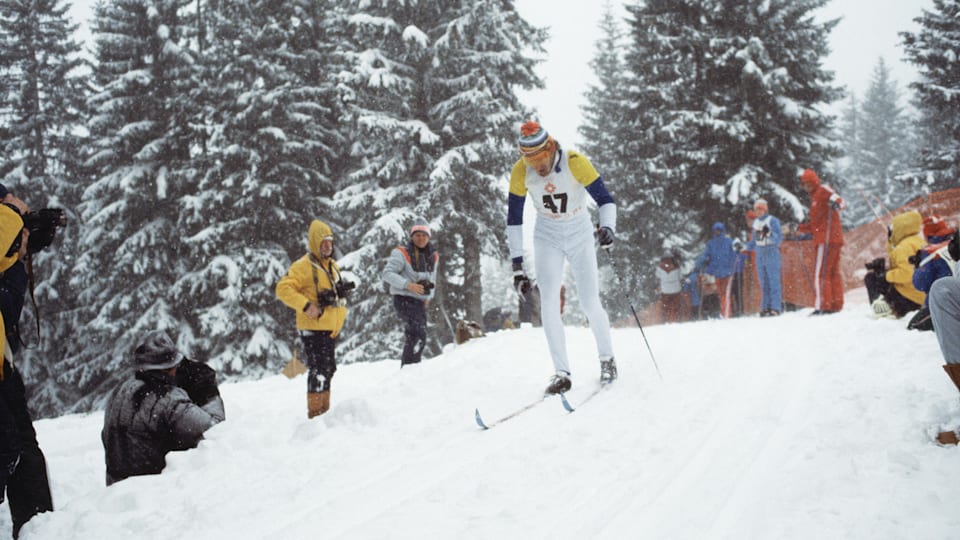Cross country star Wassberg opens his Olympic gold account
As well as winning four gold medals at two editions of the Olympic Winter Games, Swedish cross-country skier Thomas Wassberg left the Games and his sport with a long-lasting legacy.

After winning the 15km race at Lake Placid by the narrowest margin imaginable, the rules on timing in the competition were changed. And the Swede’s rapid, power-packed racing style lent its name to a technique still used to this day.
Cross-country skiing is a tough sport. Races are run over 5km, 10km and 20km routes against the clock, with racers in the individual competitions departing the starting gates at 30 second intervals.
The sport consists of classical races, where skiers use a diagonal, parallel stride, and freestyle, which has no restrictions on technique and is faster. The choice of skis and ski wax is a crucial consideration, and depends on weather conditions. Nowadays, most of these decisions are made with the help of computers, but in 1980 such calls were down to the skill and experience of competitors and their coaches alone.
Wassberg came to the 1980 Games having already achieved success in his chosen sport, winning gold in the World Cup in 1977. At Lake Placid, he braved zero-degree temperatures and high winds in the gruelling 15km competition to take gold in 41:57.63 –1/100th of a second faster Juha Mieto of Finland, in what was the closest finish in Olympic history. The result was especially hard on his luckless rival, who had missed out on a bronze medal at the Sapporo Games in 1972 by six one-hundredths of a second.
After the agonisingly close finish, the International Ski Federation (FIS) ruled that from that point on all cross-country times would be measured to the nearest tenth of a second.
Wassberg went on to enjoy more medal success at the 1984 Winter Games in Sarajevo – and again win by the sleekest of margins – when he edged out his countryman Gunde Svan by 4.9 seconds in the 50km.
It was the closest margin of victory ever in that event until the 2006 Games in Turin. At the same Games he won a further gold medal in the 4x10km relay – a feat he would achieve again four years later at the Calgary Games in Alberta, Canada.
Over the course of his career he also earned three gold medals at the International Ski Federation’s Nordic Ski Championships, in the 50km, 30km and 4x10km relay, along with three silvers and a bronze.
He also clinched the 50km race at the annual Holmenkollen Festival in Norway three times and the 15km twice, in 1979, 1985. After his 1980 heroics in the US his country honoured him with the Svenska Dagbladet gold medal, for the best sporting achievement that year.
An equally significant honour came courtesy of the innovative technique that resulted in Mieto collecting silver instead of gold in Lake Placid.
The Swede’s punchy style, where he shunned the classic diagonal method and opted for the skating style, pushing powerfully with both poles on both leg kicks – an extremely efficient, not to say physically demanding way to move over the snow – is known to this day in skiing circles as the “Wassberg” technique.
